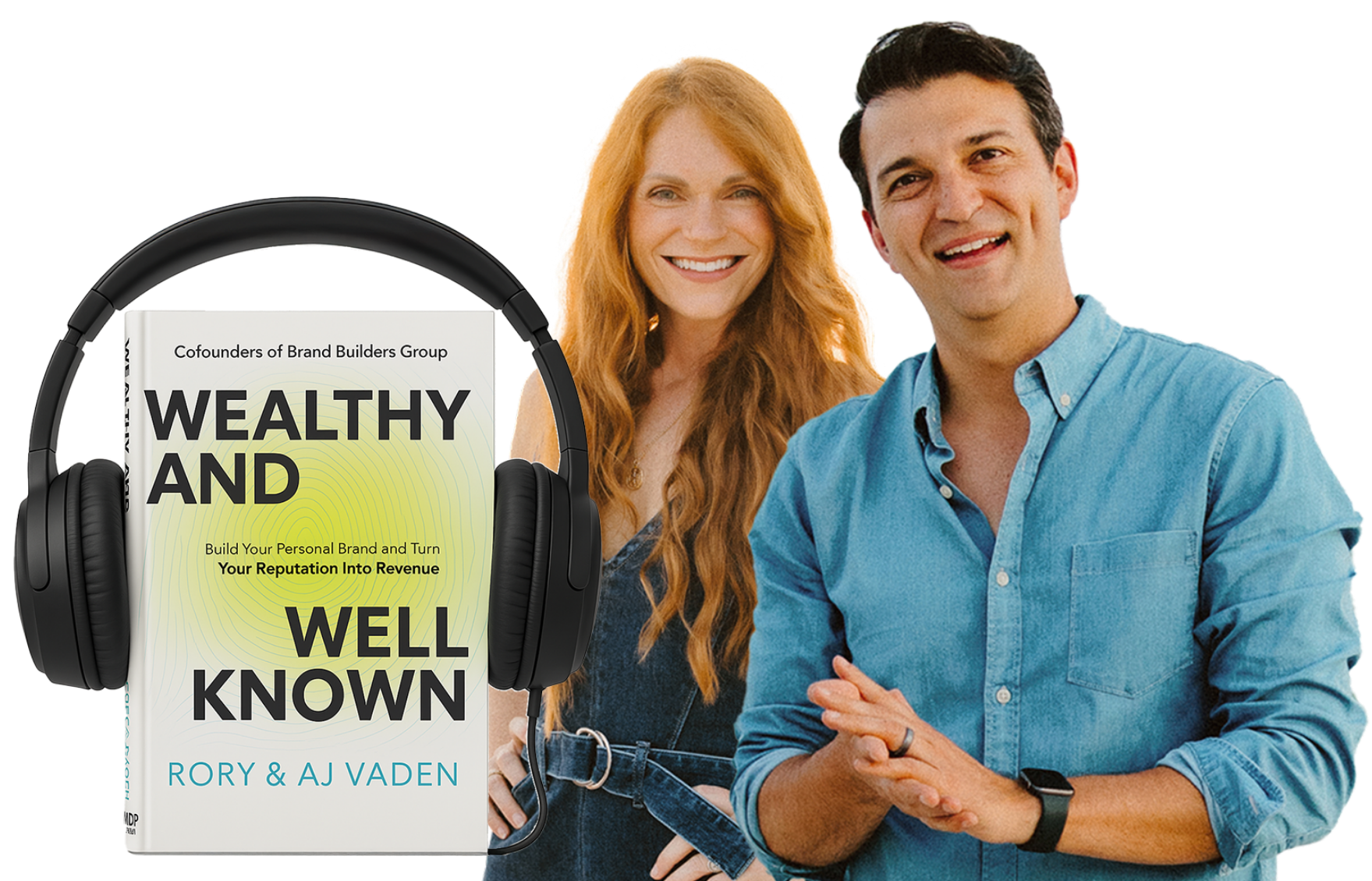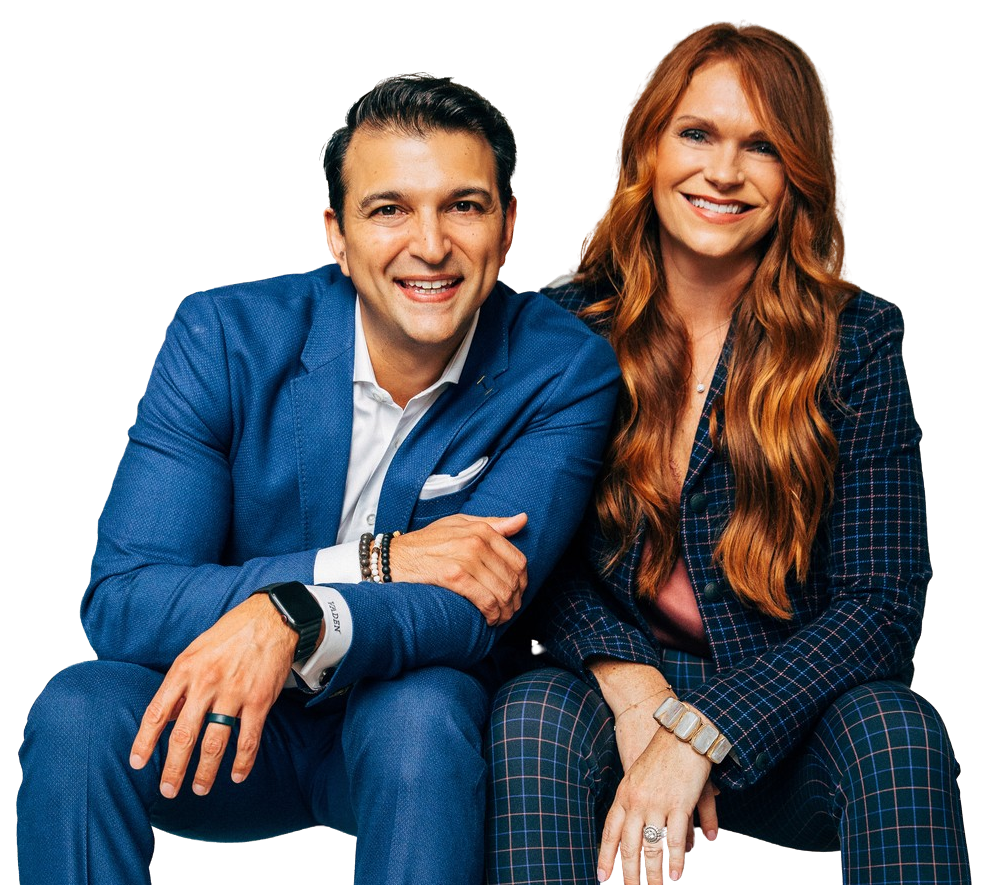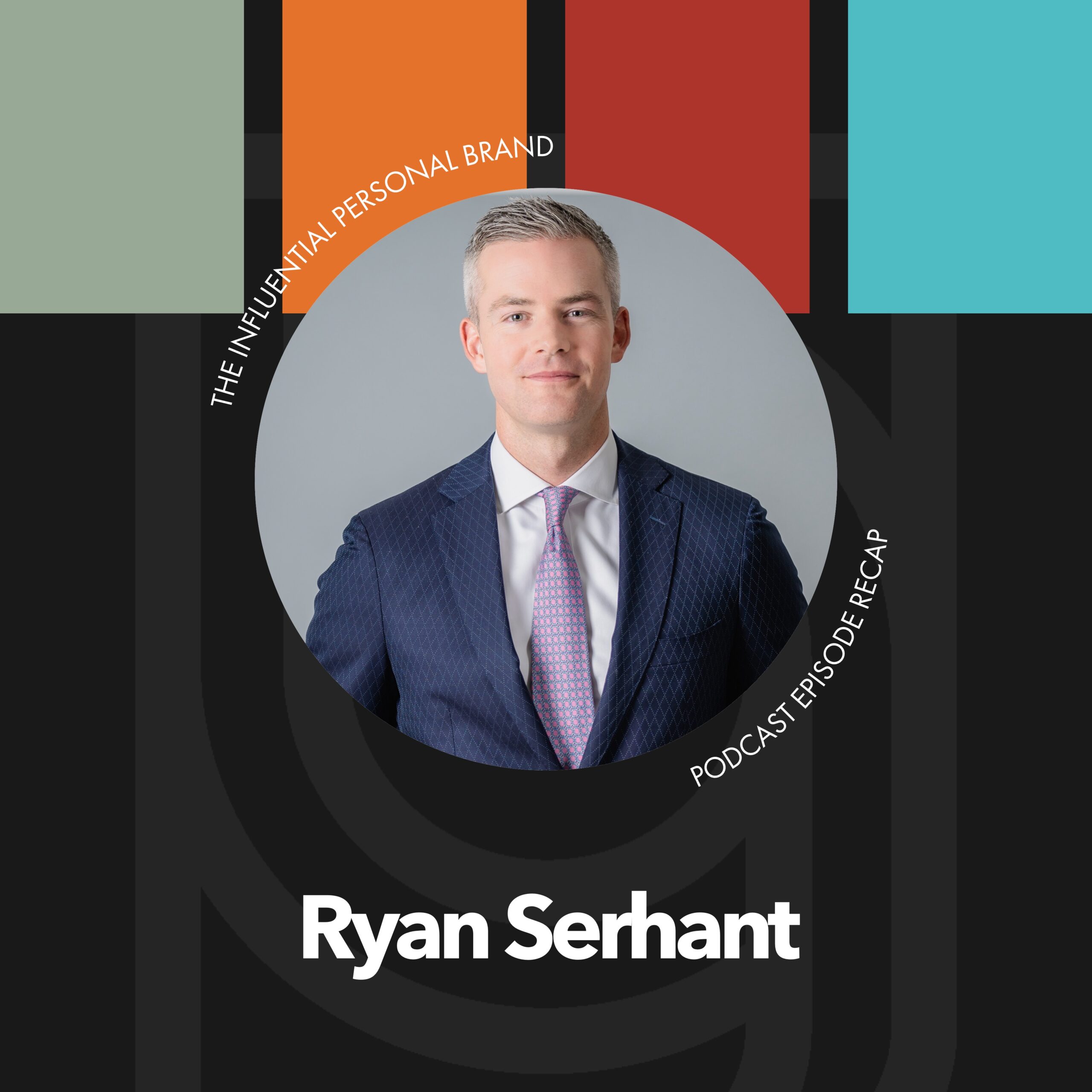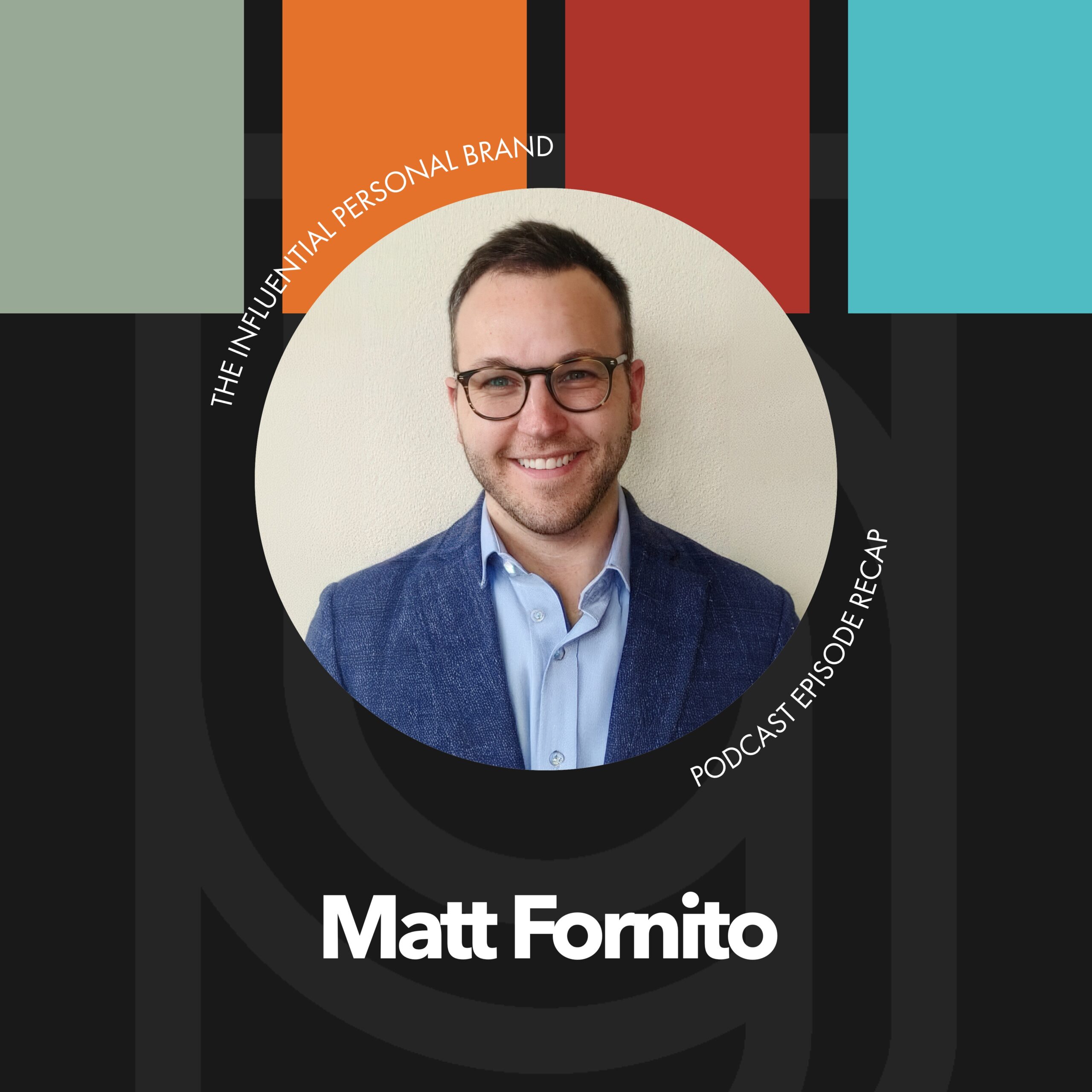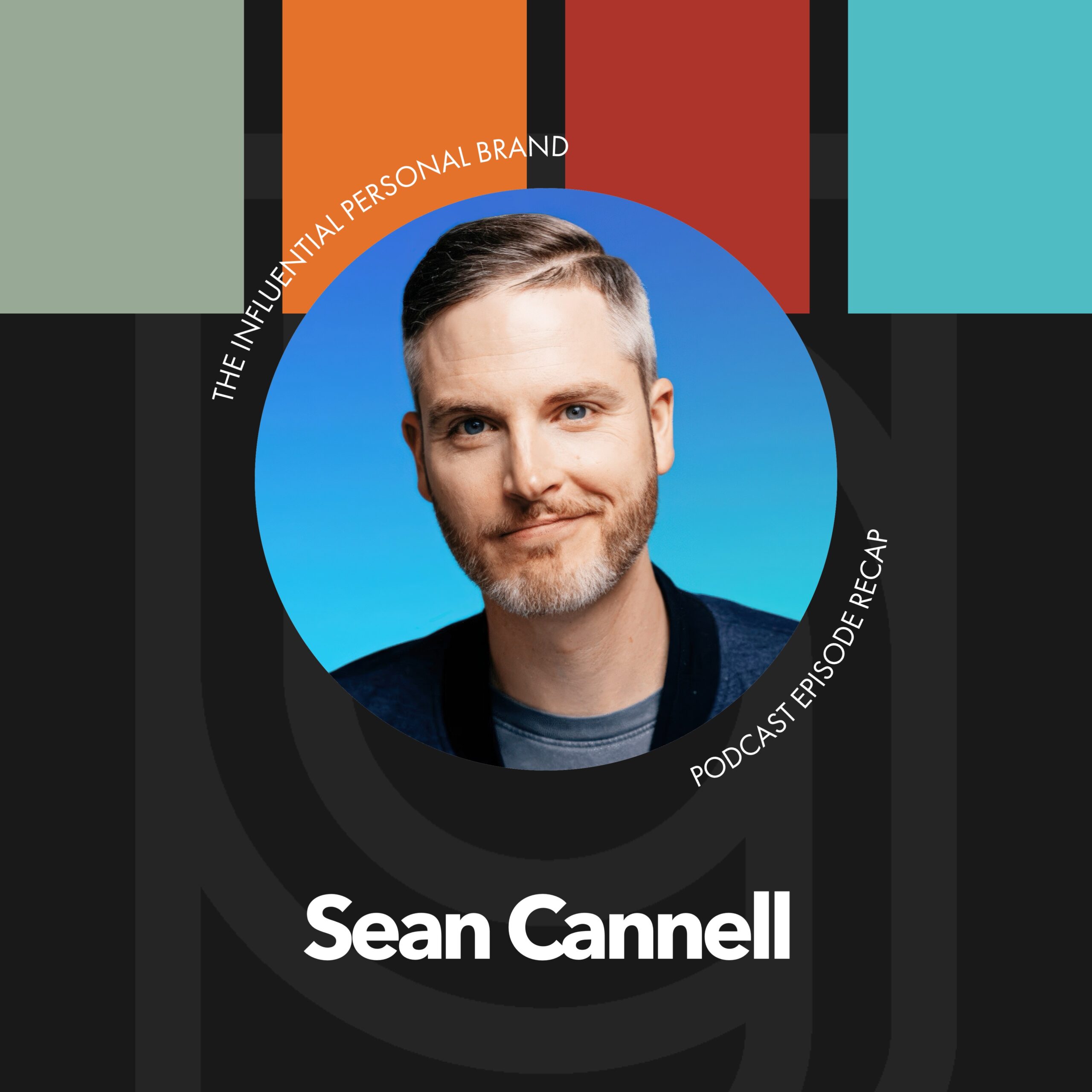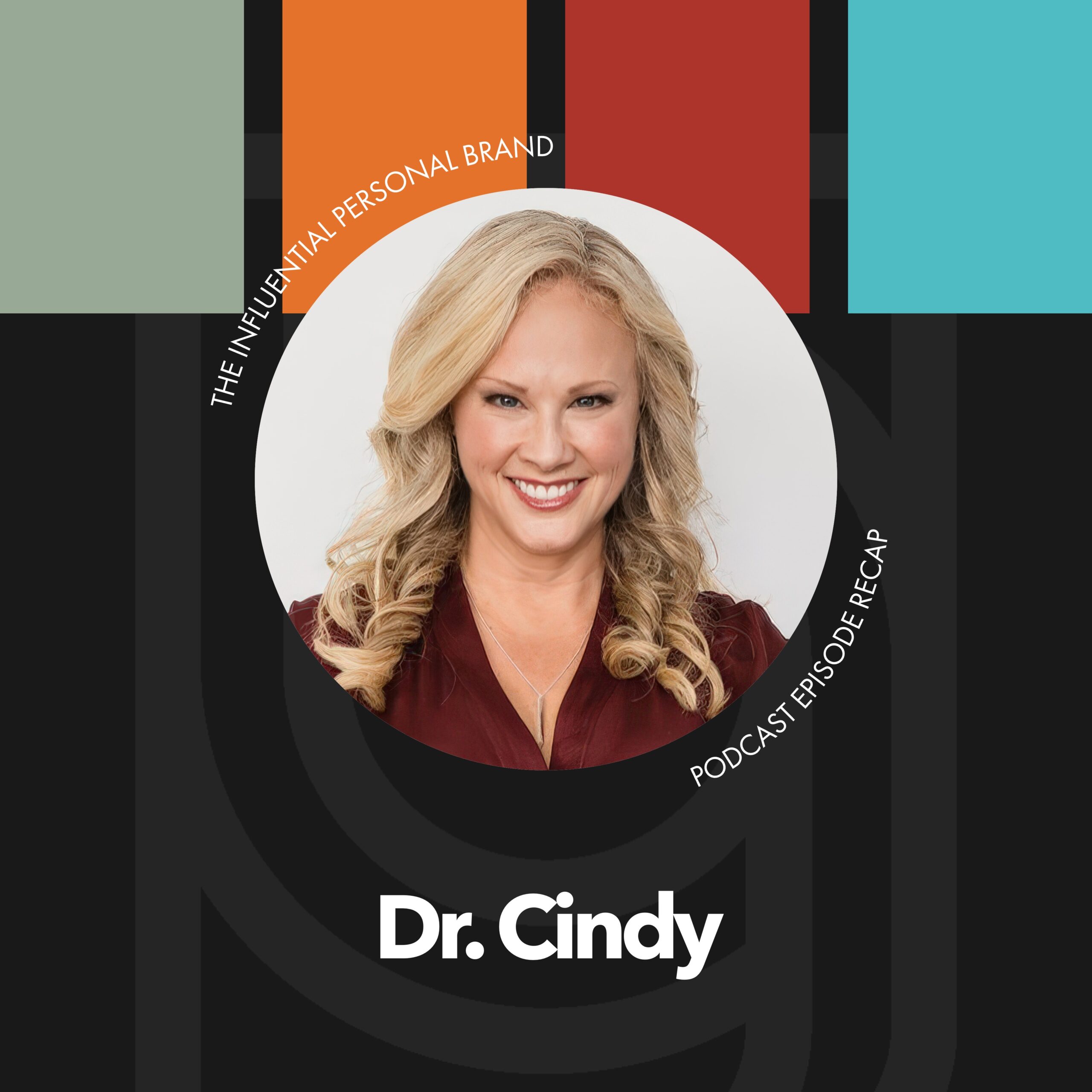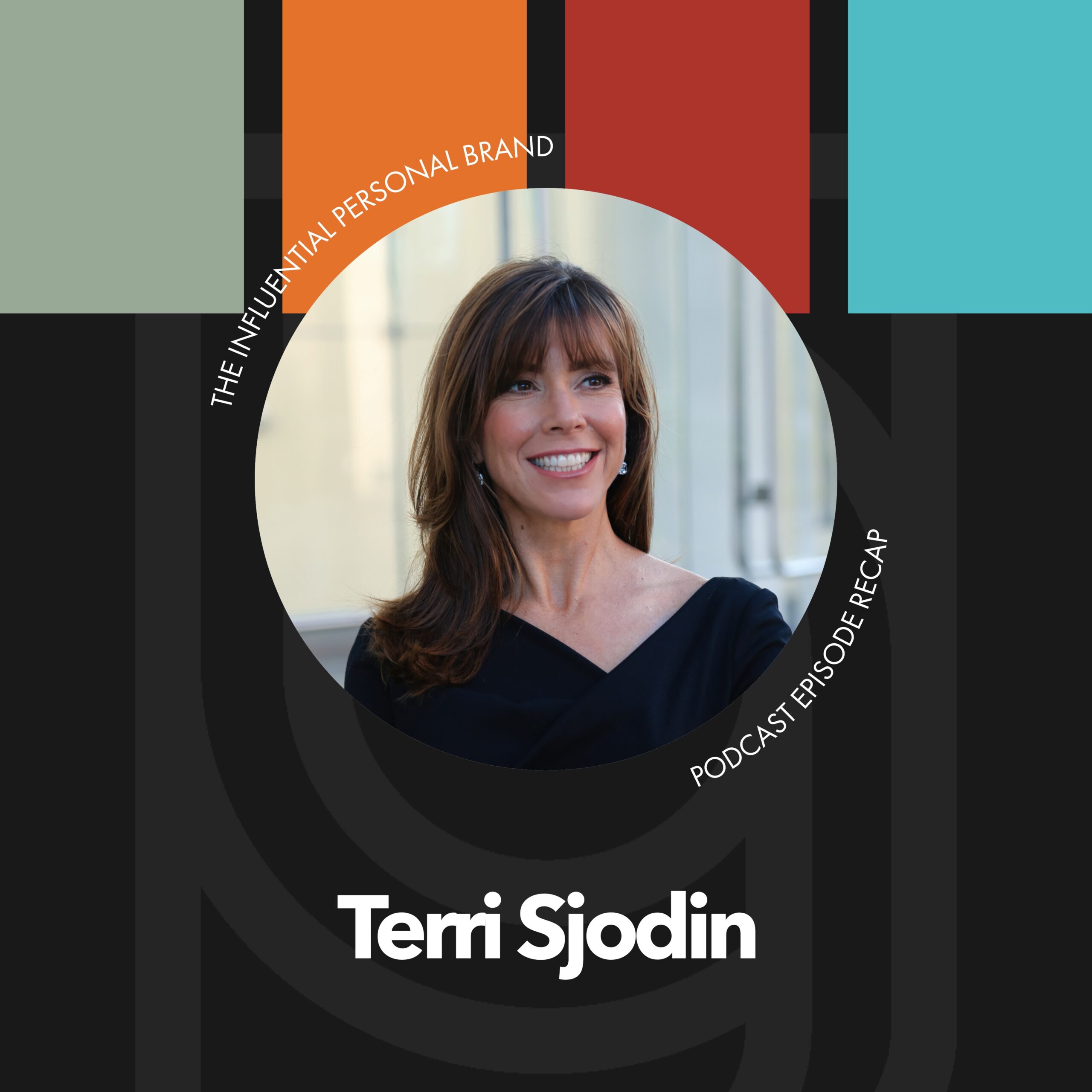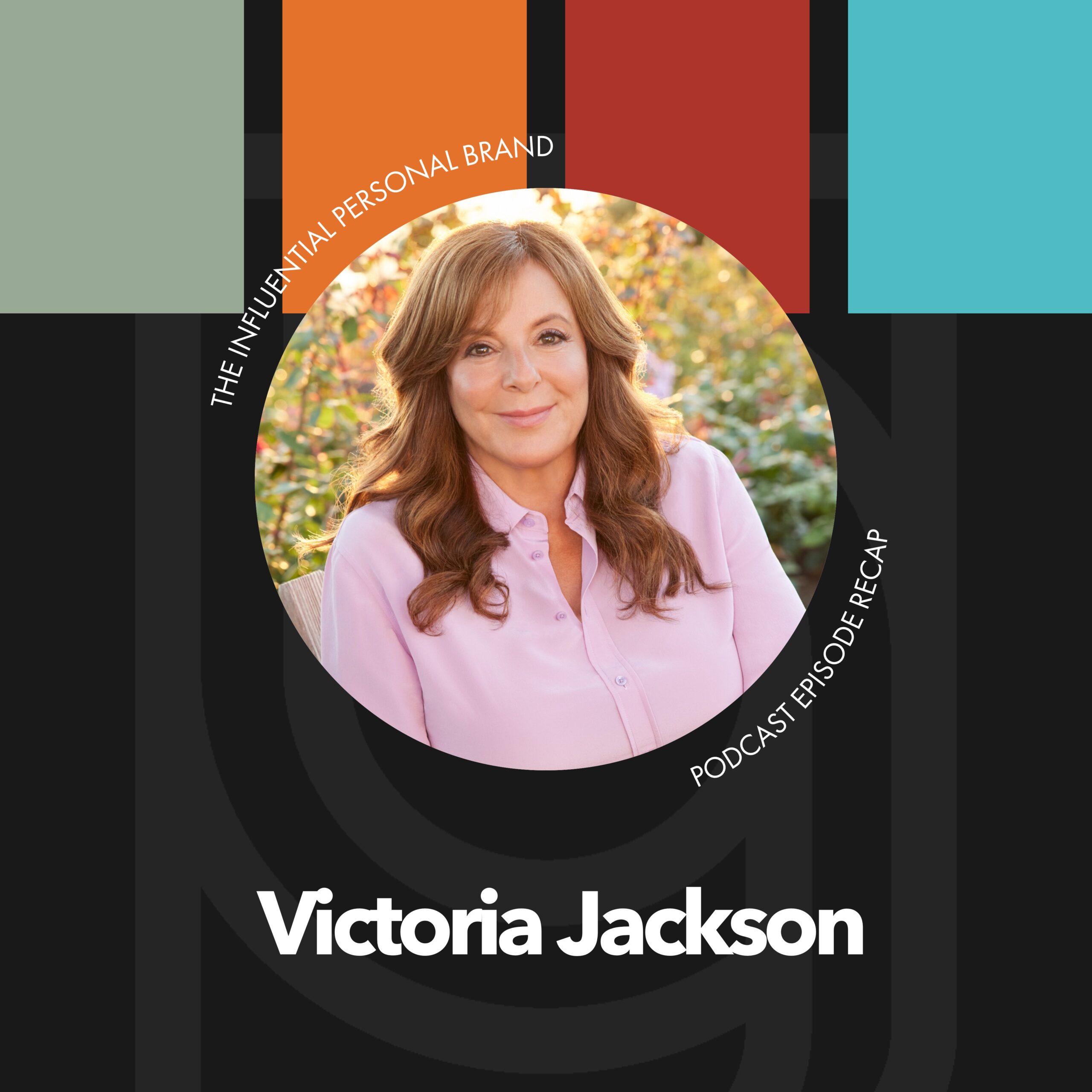RV: (00:08) well, um, that was amazing. Uh, that interview with Rick Steele, I’m telling you like that is, could be seen as more valuable than like an entire degree or program that you could, you could invest tens of thousands of dollars into and, and listen, right? Like when it comes to learning, uh, how to do it. RV: (00:36) Paid advertising, I’m going to go with the guy who spent $94 million, $94 million in Google paid ads, right? Like amazing. And he’s turned it into billions with a B, multiple companies doing billions of dollars. There’s something to be learned there. And it’s one of the things I have to S you know, I love about brand builders is it’s just when you come to our events, you know, whether they’re the virtual events or there are physical events, you know, our events are small. Like our events are capped at 50 people and most of them are like 25 30 people. And you’re literally sitting next to somebody like Rick Steele who is spend $94 million in ads, ran seven marathons in seven days, is built all these huge companies, you’re sitting next to these podcasters that reach millions of people or people have million social media followers. Like our community just fires me up. RV: (01:35) And so I hope you enjoyed and if you didn’t like go listen to this interview with Rick steel. He’s not like, he doesn’t teach what, like his personal brand is not about the stuff I was interviewing him. He did that as a favor to me cause he’s one of our clients and our friends [inaudible] okay. Him giving away his secrets about how to run, uh, paid ads through Google is just insane. So I’m going to give you the recap here. Um, AAJ wasn’t able to make it today. So I’m rolling so low of course this, this is this, this concept or this topic was square in the center of all things nerdy. And so it’s probably a proposed that I’m doing this recap by myself cause I just love this stuff and I want to try to simplify it and try to organize it for myself and mostly for you know, for you and for my, mostly for myself really just to like make sure I’m understanding things. RV: (02:33) That’s why we do these recaps and learn alongside of you. But here’s the first big idea I think from that interview is that intent based search. It is a huge part of the future for personal brands and that’s a big difference is understanding intent based search, which is Google. Somebody comes and they type in a term like nobody tight. When you go to Google and you type in broken water heater, you’re not typing it in just to learn about water heaters like you’re typing it in because you need that thing at that moment. And that’s the power of intent based search is it is somebody saying I need this thing at this moment versus traditional advertising. Even Facebook is more of awareness advertising. It’s, it’s, yeah. Inserting yourself in front of somebody and saying, Hey, check out this thing that I have, you should be interested. RV: (03:27) So you’re, it’s the difference between creating interest and, uh, drafting off of interest, right? Capitalizing on existing interest in which is what intent-based search is all about. And I, I want to make sure you caught what he said because he’s built huge companies and he said in the interview he said, I only have these two rules. They said, make sure there’s a big enough market for you to make a Denton. So there’s gotta be enough volume that you don’t have to be the only option that, that, that there’s room for you plus competitors. That’s really smart, right? Like it’s to go, there’s a, there’s a big enough market here that you can have at least a few, you know, really, really key players and as long as you’re one of the key players, like you can make a lot of money. So that was interesting to hear him say that. RV: (04:18) And then he said the second rules that don’t create a product that you’re going to be in competition with Amazon, which I thought was interesting. That’s more for you e-commerce people. Um, you know, selling, selling physical goods. But Mmm. You know, for personal brands, most of, most of you, most of us are selling video courses, membership sites, coaching programs, consulting, speaking, you know, like you’re selling, you’re selling more of a, a service or or knowledge, you know, information. And so I think it’s, it’s, you know, that’s a handy advantage that you have that you’re not really competing with Amazon. So, um, anyways, that was super powerful. The other kind of tip in this, in this space cause cause here’s the, you know, here’s the big idea I think in general. And, and, and by the way, so our phase three event, we have an entire event that is called high traffic strategies and it is a hundred percent dedicated to this kind of stuff. RV: (05:14) Now it’s all, it’s, we consider it more advanced because unless you have gone through phase one and captivating content and phase two and you have your funnels built and your visual identity done and your website and all of your copy is in place and all of your tracking, right? Like there’s all of these things that you need to do to build the house first. But then when you come to phase three like, um, this is where we really light it up and, and it’s doing this kind of stuff and, and you know, like the big idea here, it’s very straightforward. It’s in phase two, we’re going to teach you how to build organic traffic, right? It’s all about, you know, we teach this thing called the content diamond and there’s a 50 plus page document that we walk you through step by step, exactly what to do every single week with your social media plan and your email marketing. RV: (06:01) And it’s all organic. It’s all free organic traffic, but you’re building an audience. The difference here in phase three, which is the big idea is going find an existing audience and that the people that you want to do business with, they’re already aggregated somewhere. You just got to go find them. And that’s what the power of Google and intent based search platforms do is like literally someone is typing in a term at a specific and moment in time when they need a problem solved. And if you know what that problem is and you own and dominate that term and you’re willing to pay for it, you can force the traffic because these people already exist out there. And so I think this is something that I think personal brands are way behind on. I think, you know, personal brands in general, like there’s a lot of people doing Facebook ads. RV: (06:52) There’s not a lot of people doing YouTube and [inaudible] the Google ad network, right? Which is really Google and YouTube. Um, a lot of, a lot of you of that do personal brands, you know, like we’re using Facebook and Instagram, which is fine. That’s great. You know, that serves a PR that works too, can work. Um, and, but it’s, you know, it’s totally different. They’re two different universes. The other thing with the YouTube thing, which is, you know, as a handy little tip, if you didn’t pick this up from what he was saying was that in YouTube you don’t even get charged for the ad if somebody skips it. But you know, like if they watch less than five seconds, you don’t even get charged for the ad. So that’s like a free impression, a free show of like, yeah, you got, you got five seconds to do a free five second ad or say your name, your company name, and boom, like I get that impression out there that is super powerful. RV: (07:49) Like free advertising on the biggest ad network in the world. Mmm. Pretty incredible. So intent-based search I think is, is a big future for personal brands. We dive into it completely at our phase three event and it’s just decide all based upon the premise of that your audience has already collected, they’re already aggregated in many places. So while you’re building your own audience, go be in front of the existing audience. And that’s really important. The second thing that is more of a concept, I just want to make sure y’all understand is this concept of re retargeting and it’s important that you get this right because you know I didn’t really understand it and it it’s, it’s something you can hear and not recognize the power of of what it is. And what it means is that, you know, when somebody comes to your website, you’re probably familiar with the concept of lead capture and that’s something we teach in phase two is build a lead magnet. RV: (08:49) Yeah. Which is offer something of value for free in exchange for lead capture. You’re going to capture somebody’s name, typically their name and email at first, but what about the person who comes to your site and either you don’t have a lead capture setup or you know, they come to your site somehow they’re on there, they found their way there from something, but they don’t ever, they never fill out the lead capture. Right. They never contact you. They never say they want more information, but some they’re interested it somehow, some way they ended up there. Well that’s what retargeting does. It’s basically taking this person who would otherwise be invisible. You would have no way to track them. And it’s, it’s almost like you put a beacon on them and, and now it’s like a digital beacon that you can see wherever that person goes throughout the web and you can re target them, you can show them additional ads to try to drive them back to your website for specific products or specific offers. RV: (09:53) That is huge. That, I mean that is insanely powerful is to go imagine if in the real world you can know everyone who ever had a thought about, Hmm, your, your company or your product or service. And you could literally know everyone who had ever had that thought and then you could show an ad just to those people. That’s like what retargeting does. I mean it’s extremely powerful and they never have to give you their email. They never have to give you their phone number. All they do is show up on your site and that is how you get that. And so you know, there’s some technicality parts of that that we cover at the event in terms of how to set them up. But you know, your web person can set it up and Google, Google and YouTube and then Facebook and Instagram, you know those go together. RV: (10:38) They’ll give you what’s called the pixel, which is what you need. It’s a piece of code that you install on your site. LinkedIn also has one. So you know, if we’re managing your brand or or somebody else’s managing your brand, you just need to tell your web person like, I need you to install my Facebook pixel pixel or my Google pixel on my site and you’ll immediately start tracking that stuff. That’s part of what we do in phase two. We don’t teach people about pixels and retargeting, but we do. We do tell them you need to, you need to just do this. Like just, just listen to us and do this. We’ll teach you why later. It’s kind of wax on, wax off type of thing. But you gotta be retargeting, like at least be showing ads to people who are already saying they’re interested in what you do by virtue of them coming to your sites and to your registration pages for your funnels and to your sales pages for your products. RV: (11:30) Mmm, really, really important. And then the third big idea here I think is just optimization, optimization. You know, when he was telling this the, the, his story about, uh, you know, how, how he started his company and, and you know, they’ve done a couple, they were in the mortgage space and now they’re, now they’re in, um, you know, they’re doing blinds. But yeah, I think w when he talking about this idea of the very first ad they ran was for pho blinds and he was saying like, you start with 50 bucks and you just, you put $50 into it and you see what happens and you, you, you measure and you watch to see, do, do people click on the ad and then if they click on their ad, do they come to your site? And you can run different ads. And so even somebody who’s spending $94 million in ads, it’s starting with the $50 ad spend. RV: (12:26) Right. You know, you, you probably go, I don’t have $94 million. Well I don’t either. But you know, you could probably scrape together 50 bucks or a hundred bucks and get some data, get some testing and these tools that he mentioned, uh, I had heard of the first, I had not actually heard of the second, which I’m excited about. So these are some nerdy tools for, you know, either your digital marketing team or your tech person or you. And we’re certainly going to be, you know, getting into the details of these and introducing them to our, our team and our community when we get to phase three, um, is heat mapping. Okay. So that’s a crazy egg was the tool. There’s some other ones, but crazy egg is the one that I’ve always heard of. So heat mapping shows you, it’s, it’s kind of like, you know, when you see an ad for like an acid or Mmm, yeah, somebody is sick and they have, they show like a FA, a figure of a human body. RV: (13:20) And then there’s like flashing red where the pain is like, Ooh, heartburn. Um, that’s like what heat mapping is. It’s just, it shows your website and then it shows these flashing red areas of where people are hovering with their mouse. Right? So that’s one of the things people do is they wherever they usually point with their mouse, the mouse to where they’re reading. Okay. Or to, you know, clearly to what they’re going to click on. And so you can follow the journey that a new visitor coming to your site for the first time who doesn’t know who you are or an experienced person. Just anyone come into your site and, and you can go, you know, is my copy effective? You know, are my, are my lead magnets working? You know, are these buttons effective? And you can see like what are they passing over and what are they spending time looking at? RV: (14:13) And what are they clicking on because of the heat map. Tell you again, without even knowing who the people are, you don’t even have to have their email. It’s just the people who come to your site is tracking it. And then this is the new one, which is awesome. And this is next level. Uh, um, he said the company or the tools called full story, which I had never heard of. So I’m, I’m, I’m jacked about this full story, which is a video experience. So not just heat mapping, which kind of shows like these are the hotspots that people go to, but full story literally records the entire journey of someone on your site. So where do they down and where do they stop and, and, and how does their mouse move across the page. I mean, that is huge. Like what an unfair advantage of the digital world. RV: (15:01) And this is where it’s like, if you’re not doing this stuff, you’re, you’re, you’re behind. And if you’re not doing this stuff in five years, you’re, you’re out of business, right? Like, like right now, if you’re not doing it, you’re just behind. But if you’re not doing this in five years, you’re out of business. But here’s the problem. You don’t, you don’t start with this stuff. This is domino number 76 you got to lay the first 70 Domino’s in the right order, which is what phase one and phase two is all about. And you got to get busy and I got to get busy, right? Like I freak out here some of this stuff cause I’m like, man, somebody is going to figure this out. They’re going to come crush. They’re going to come dominate. So if you’re not doing it right now, you’re just behind. RV: (15:44) But if you’re not doing this in a couple of years, you’re out of business. So this is a big deal y’all like this is, this is happening, it’s been happening and we need to get on board and, and you perhaps need to get on board or your team needs to get on board. We need to up the sophistication here because we’re competing with people who do this, right? You’re, your website isn’t just competing with other people who do what you do. You’re competing with Amazon, you’re competing with Rick steel, you’re competing with Ninja level digital marketers and cutting edge tools and intelligence and data and tracking. And it’s like if you’re not doing any of that, it’s time to pick up your game. You better get going. Um, because there’s only probably a little window here of, you know, a couple of years where you can establish yourself as the authority in your space. RV: (16:35) And then after that it’s going to be hard to come and dethrone the King. I mean, think about if you were launching a store right now that was like, okay, home Depot and if you were going to try to build a brand and to go, you know what, I have an idea for a hardware store and you would be competing against Lowe’s and home Depot and ACE hardware and true value and, and, and Menards and then, yeah, and be like, yeah, I’m going to start a new one. Think of how hard that would be to dethrone these huge national brands with millions and millions of dollars. It would be difficult to do it. It’s not that it couldn’t be done, but it would be difficult. There would have to be something very disruptive. Well, that’s how it’s going to be in the personal branding space. RV: (17:23) I think in five years there’s going to be people who own the verticals. They’re already are right there already are these giants in the space, like, you know, you already have Tony Robbins than you, you’ve got Mmm. Yeah. You know, like Rachel Hall is, you’ve got Mel Robbins, you’ve, you’ve got Brendon Burchard, you have Marie Forleo, you’ve got, uh, you know, Lewis house. So some of our clients have these huge spaces that they own and, and there’s a little gold rush going on, right? And if you’re not in the game, you’re in trouble. Like, you gotta get going now, like move this is, this is it, you’re, you’re living in a time where you have an opportunity to change the world with your message, but there’s a closing window of, of how much opportunity there is there. And, and you know, talking to somebody like Rick in this interview just makes me go, Holy moly. Like I, I’m, I need to pick up my game and I consider myself, you know, towards the leading edge of, of, of thinkers and leaders and teachers and people in this space. But knowing that Rick steel’s out there, whew. Like it’s a new level and it’s a new day, but also massive, massive opportunity. So it’s exciting and it’s fun. And I’m so glad you’re here because you’re learning it now and you’re not learning it before it’s too late. So thank you for being here and we’ll catch you next time on the influential personal brand.

